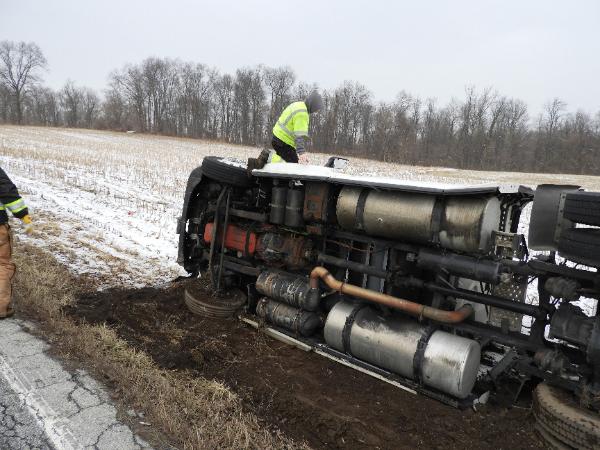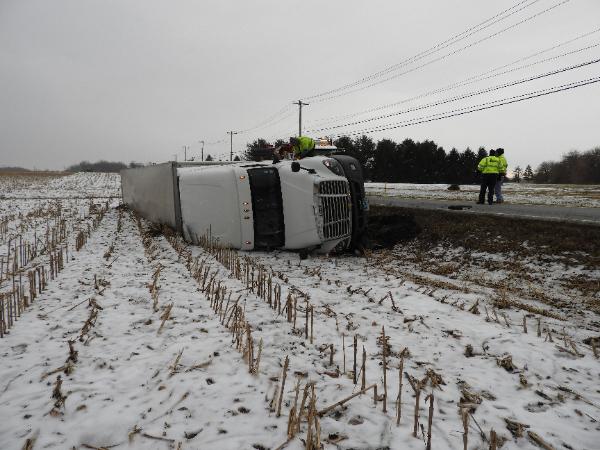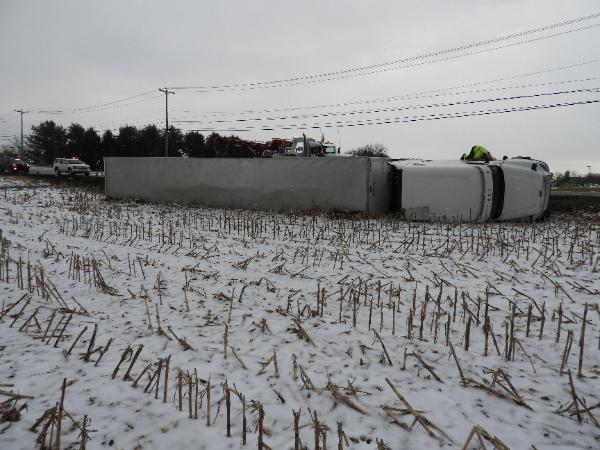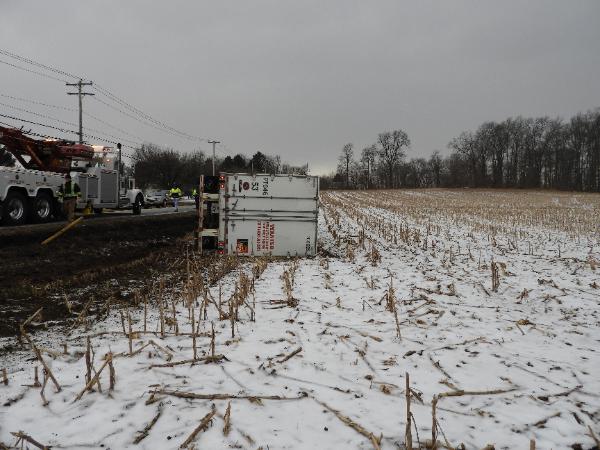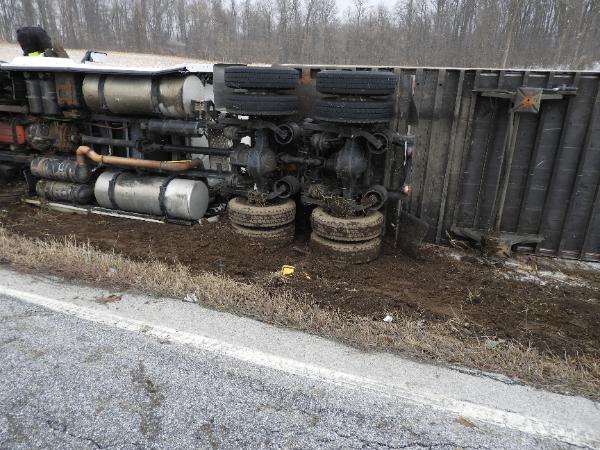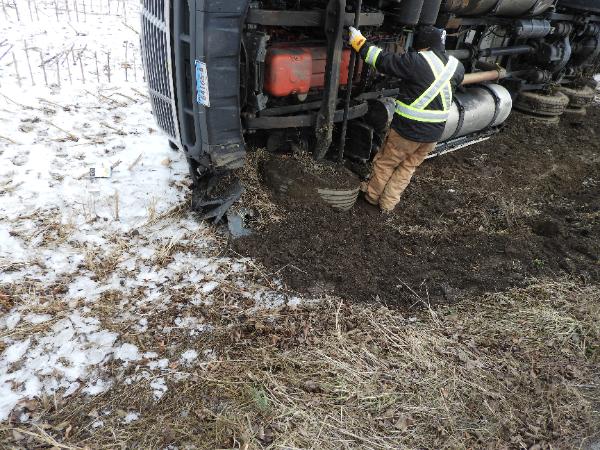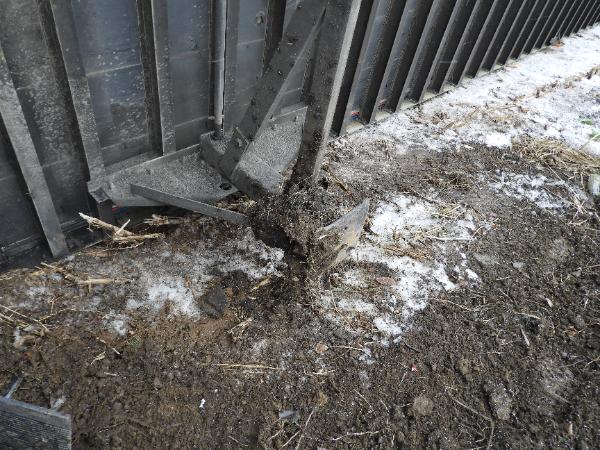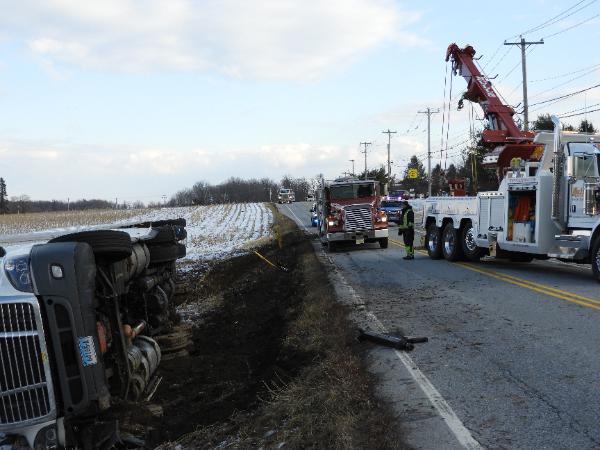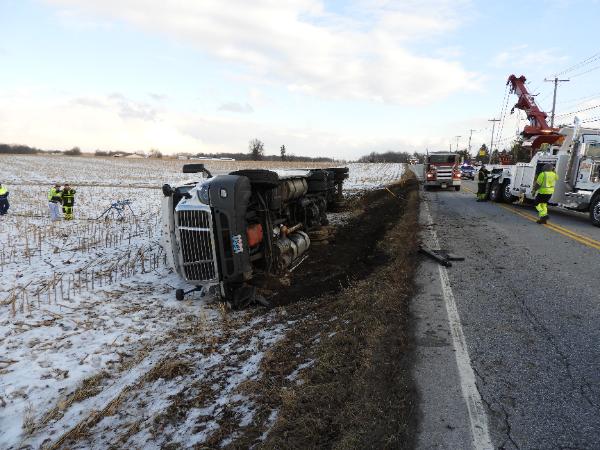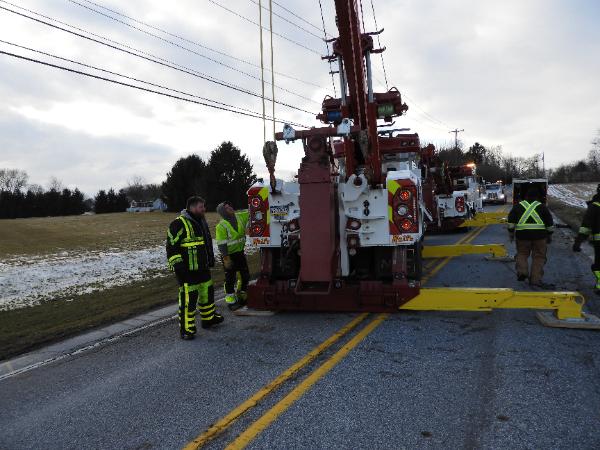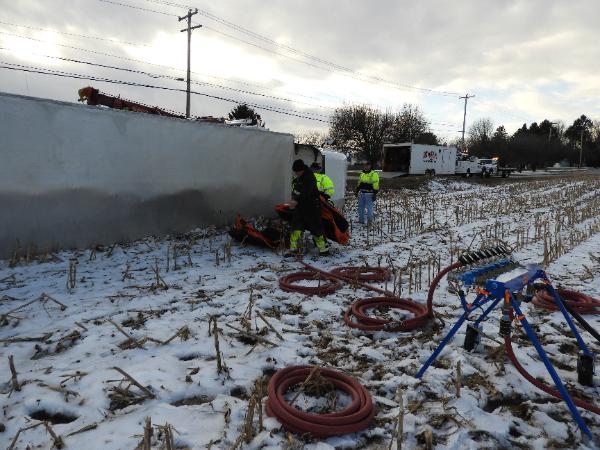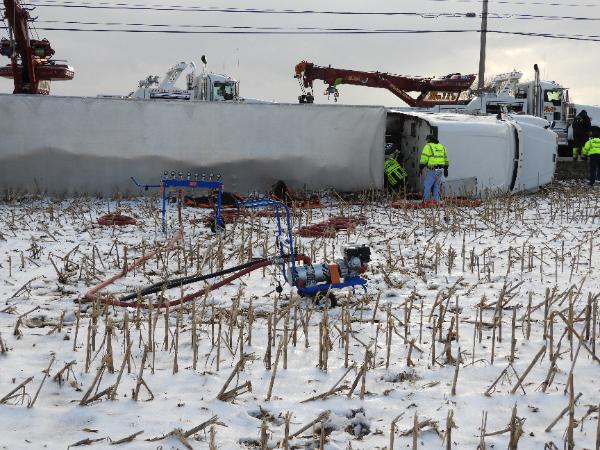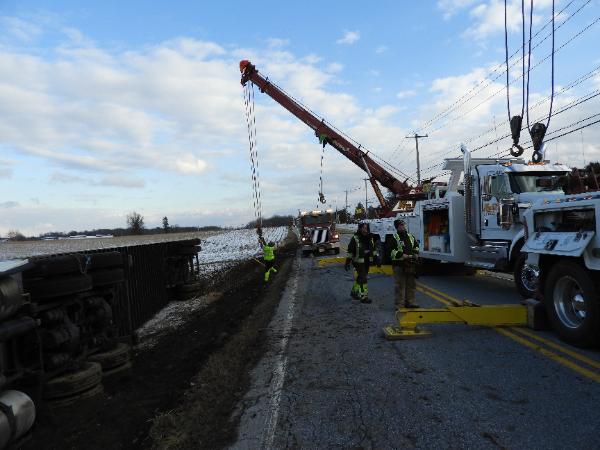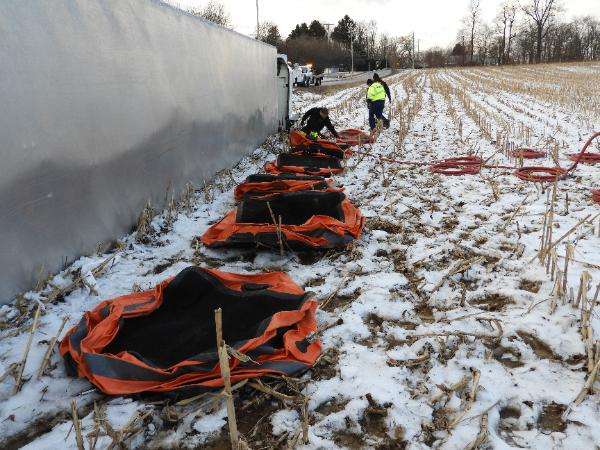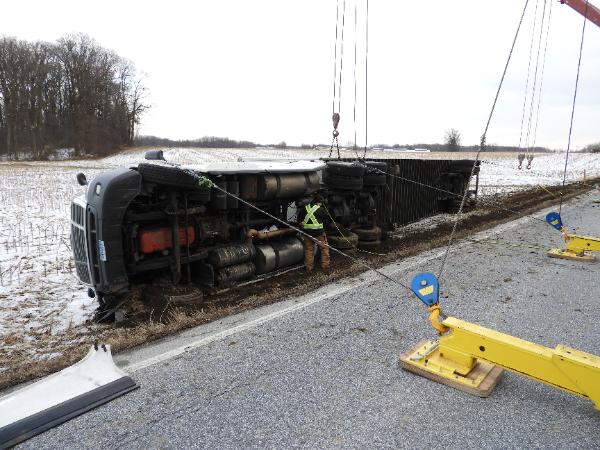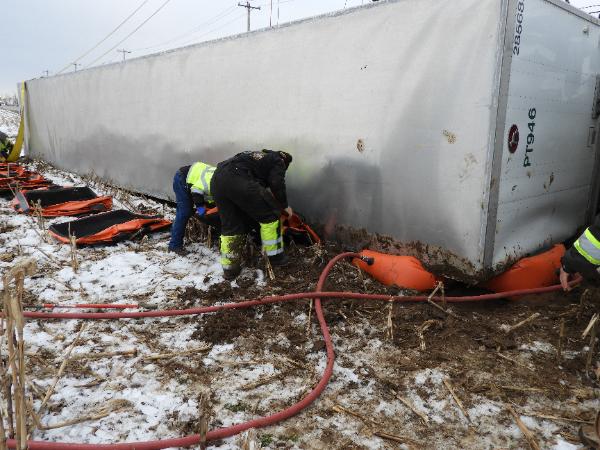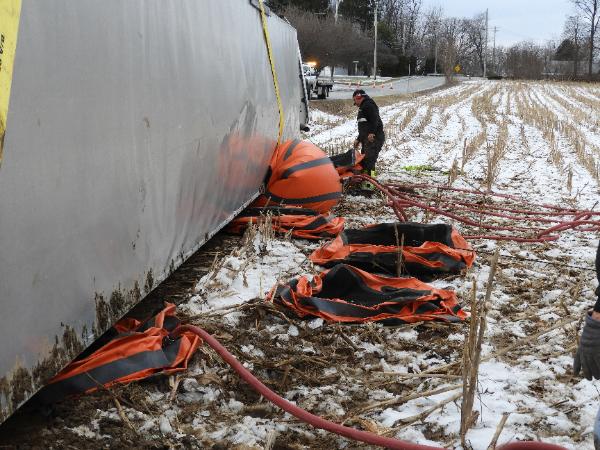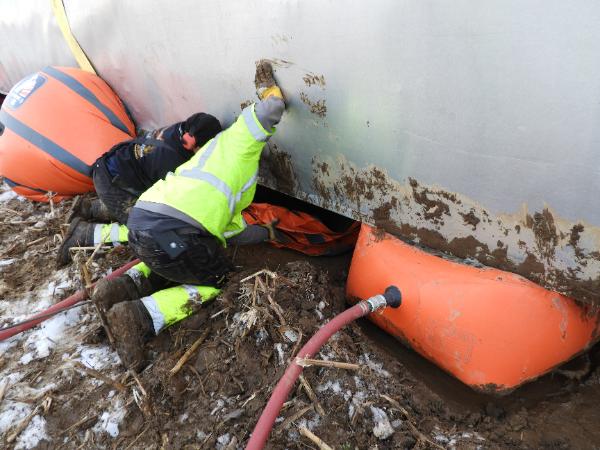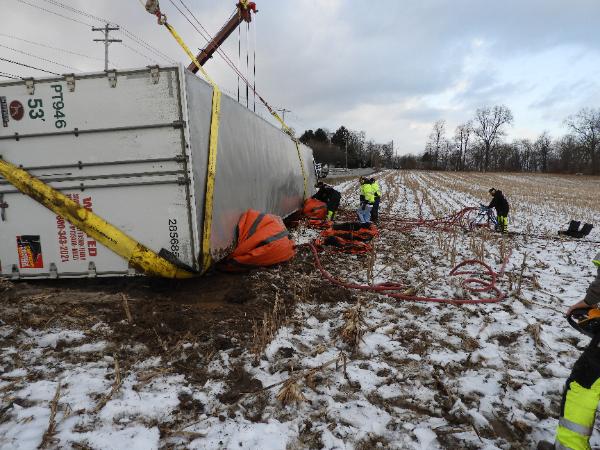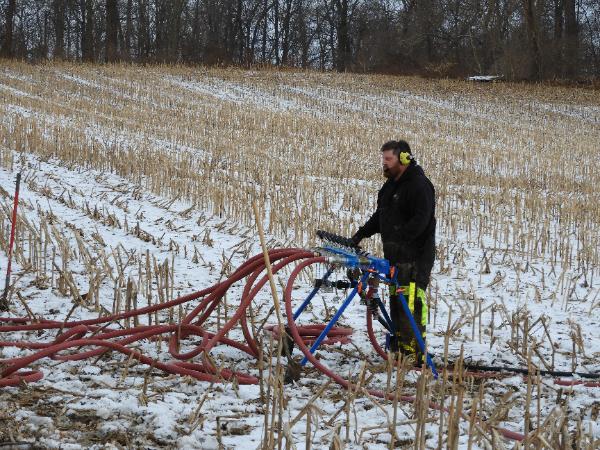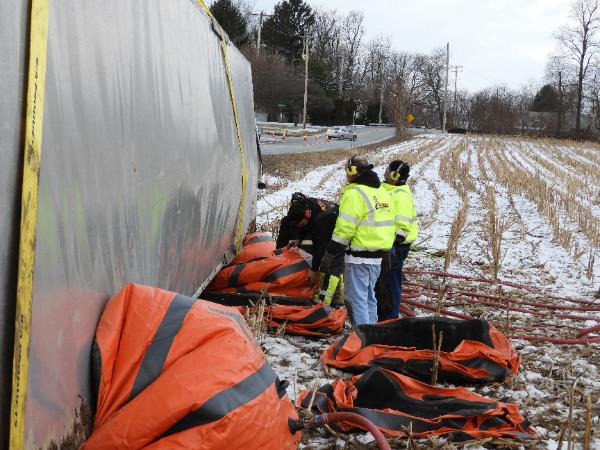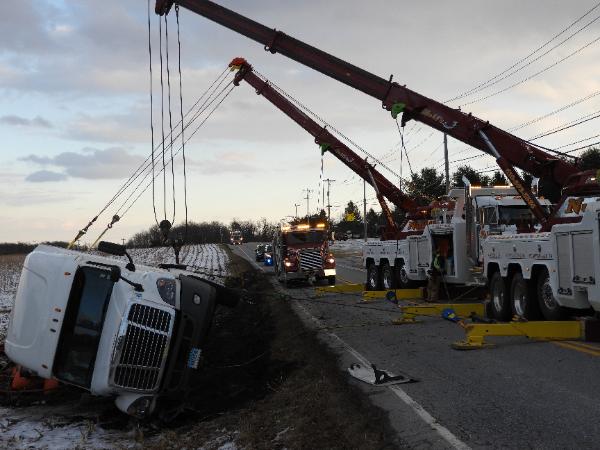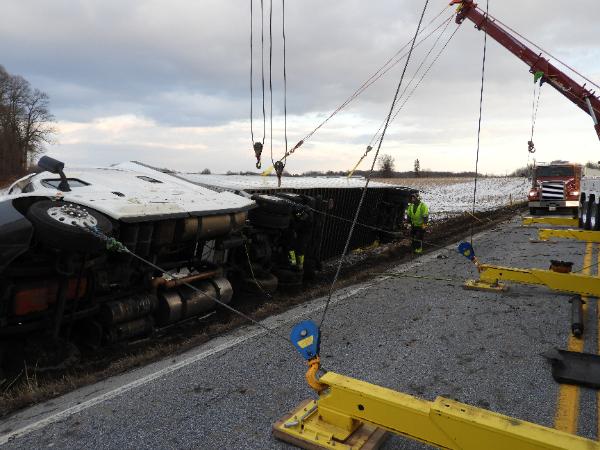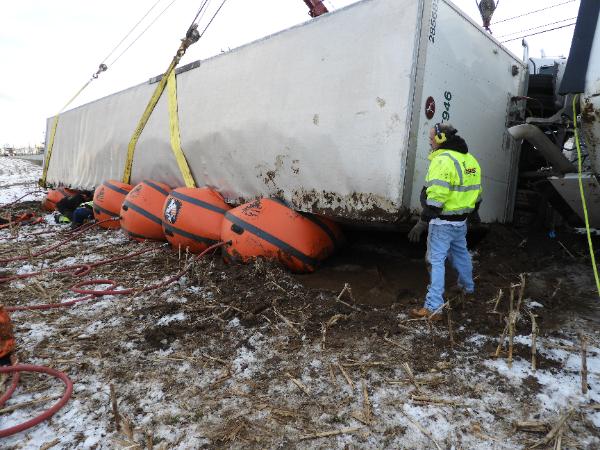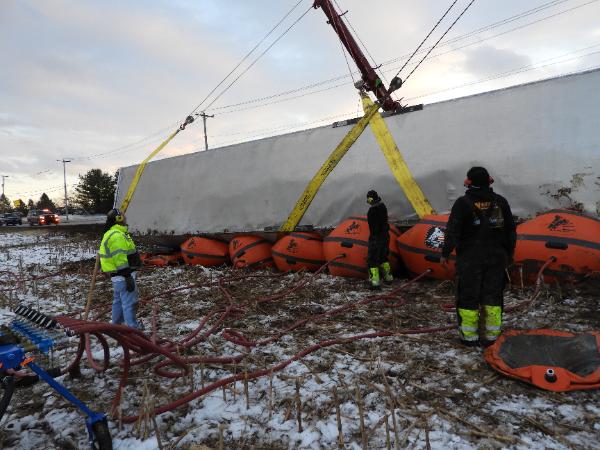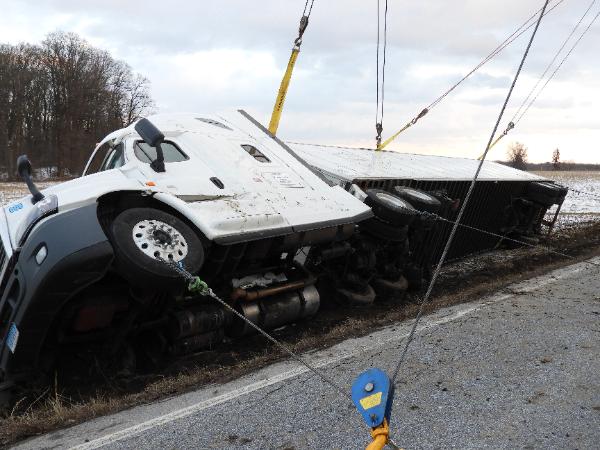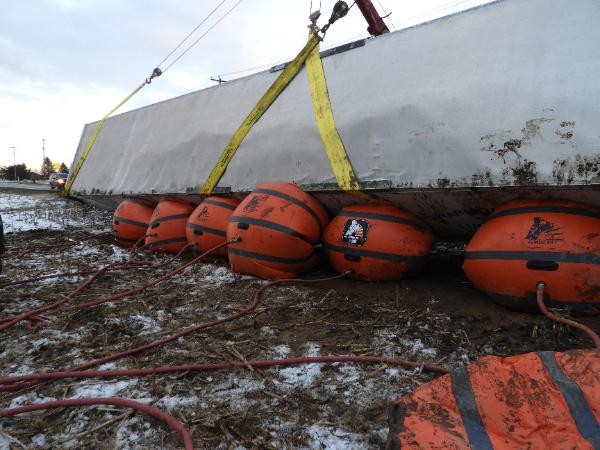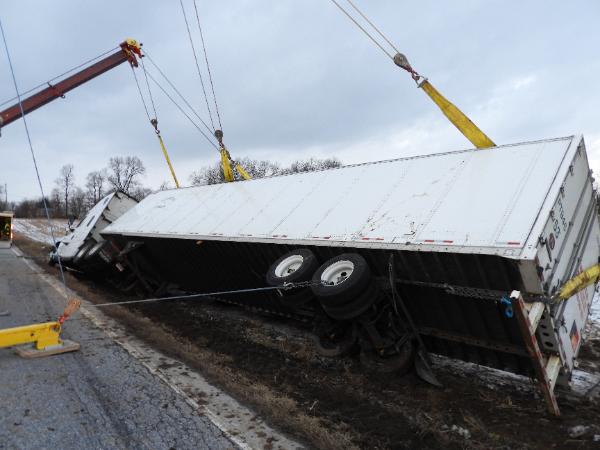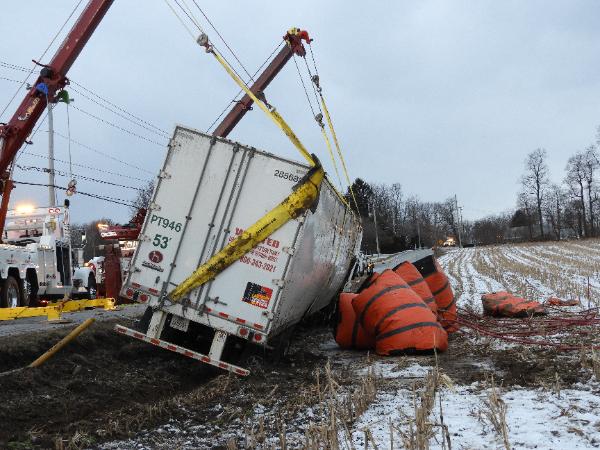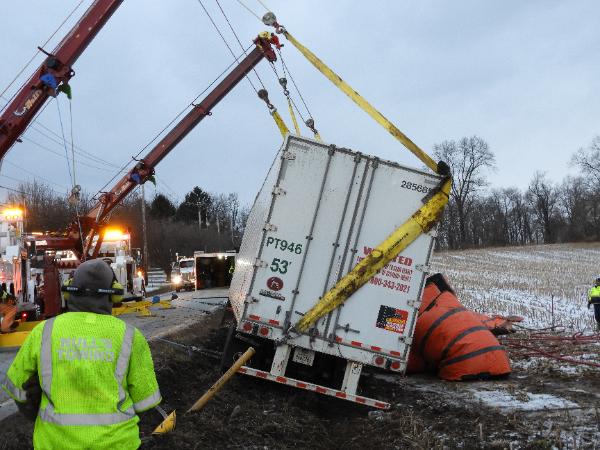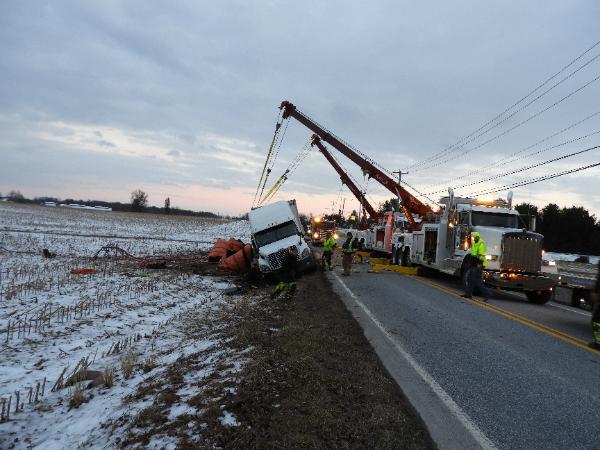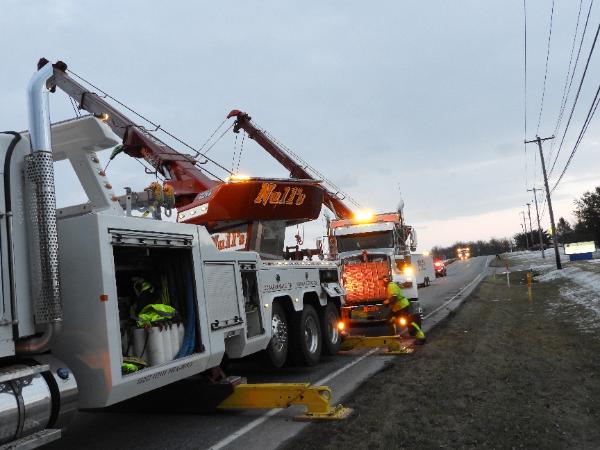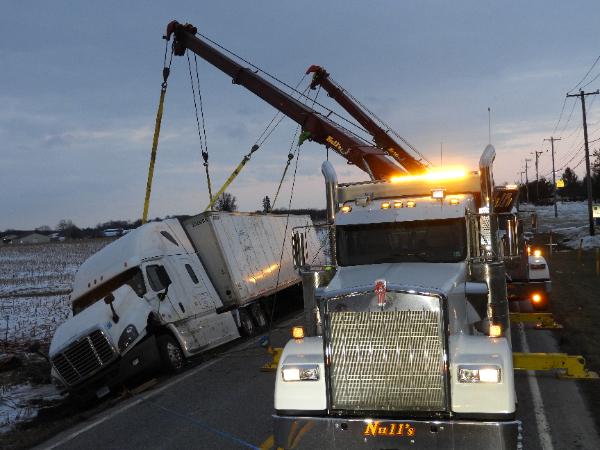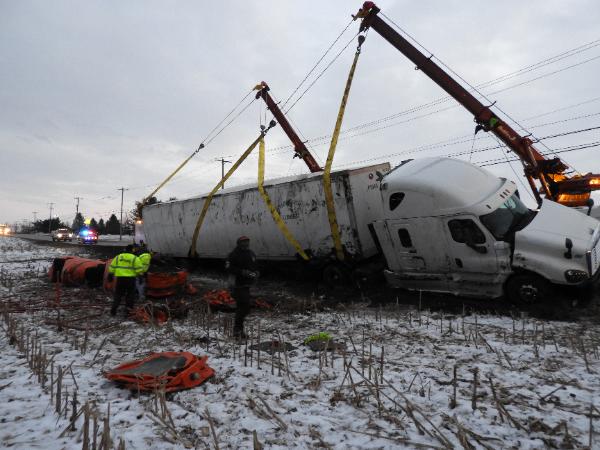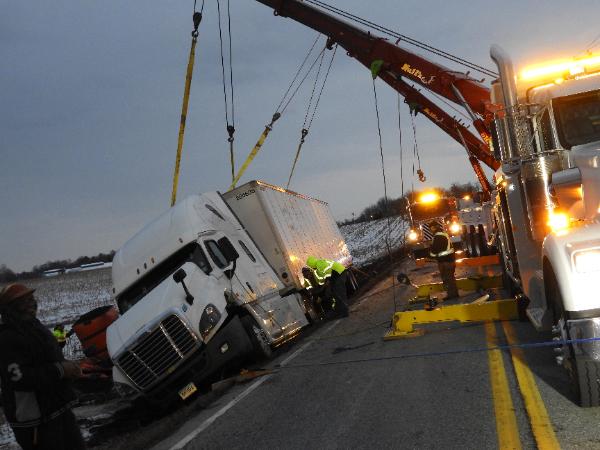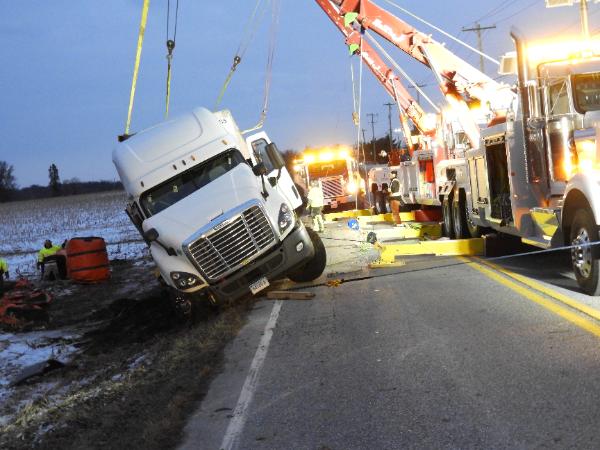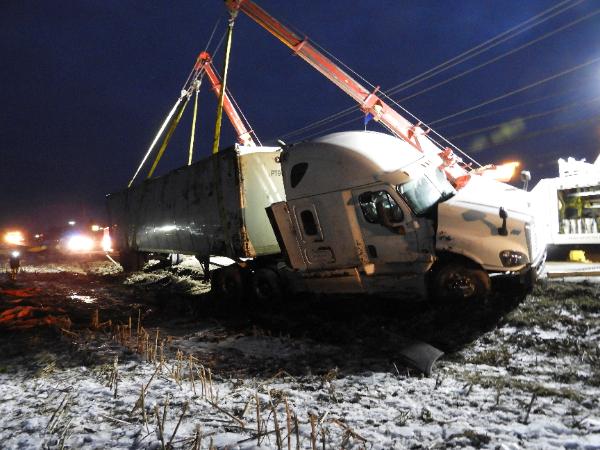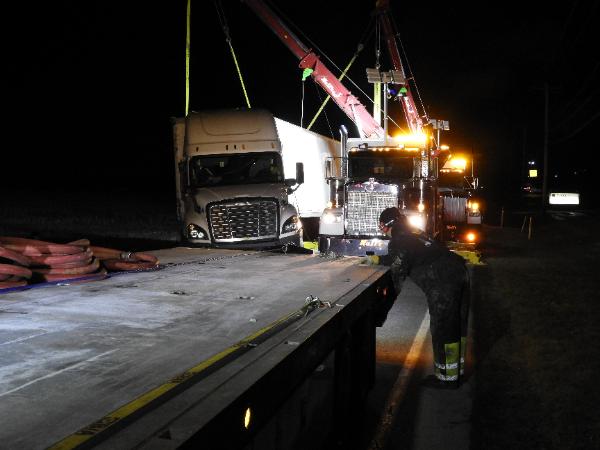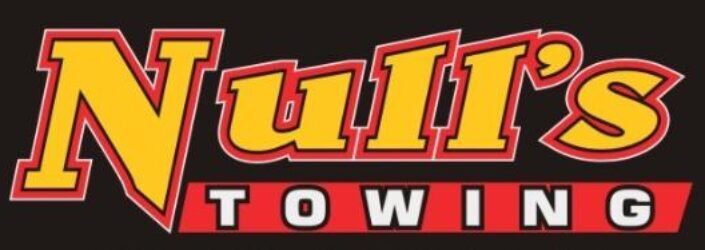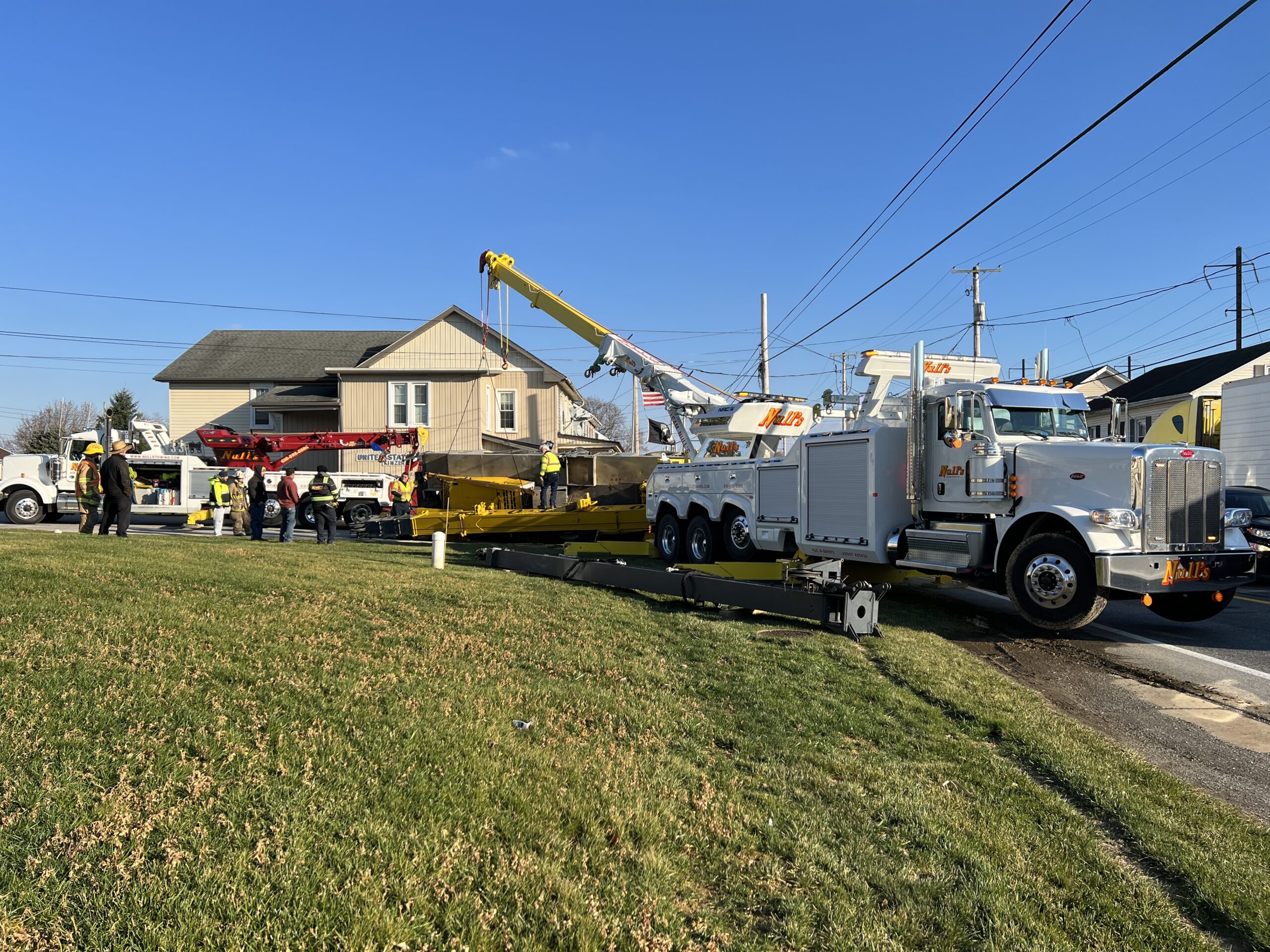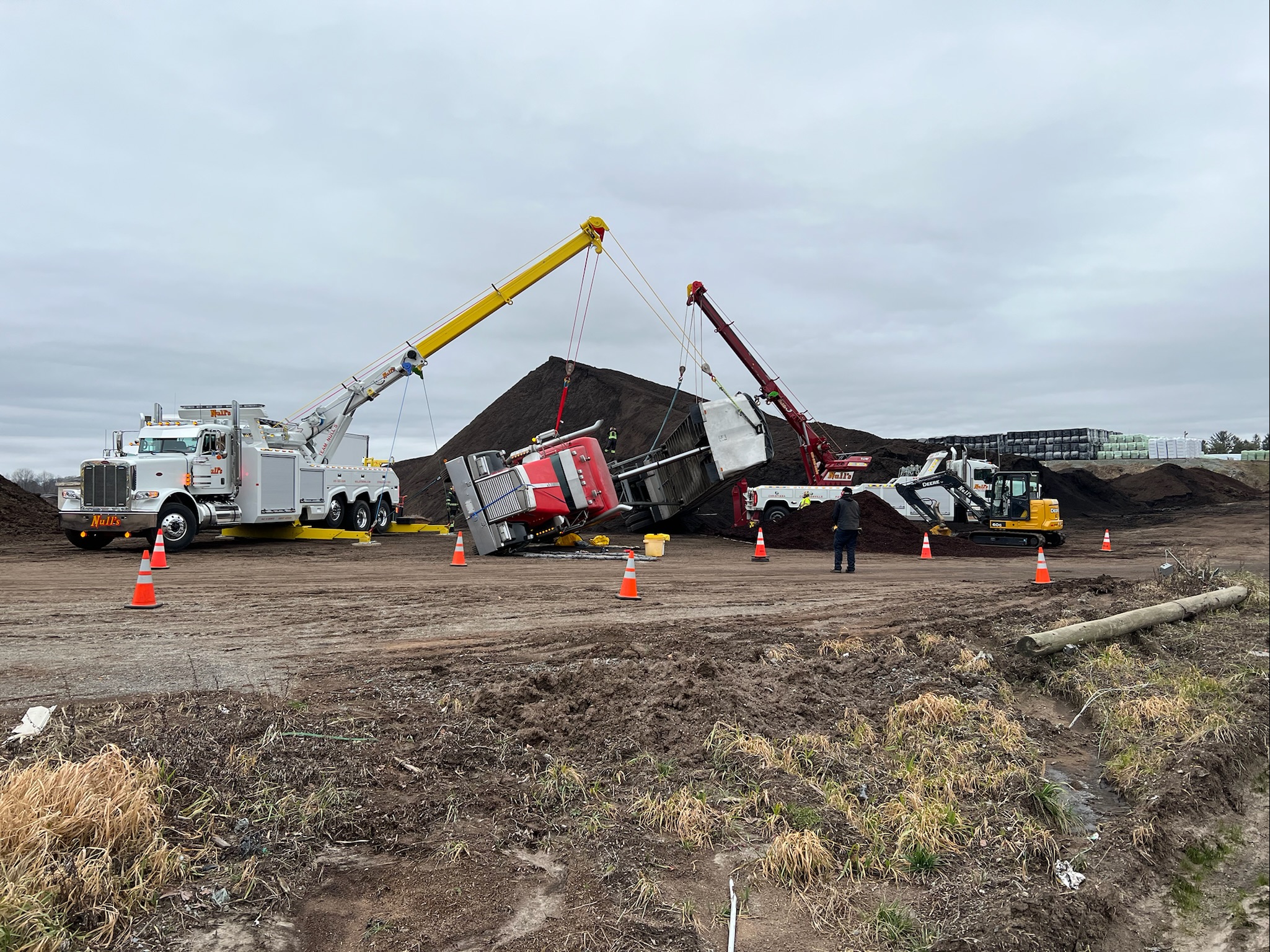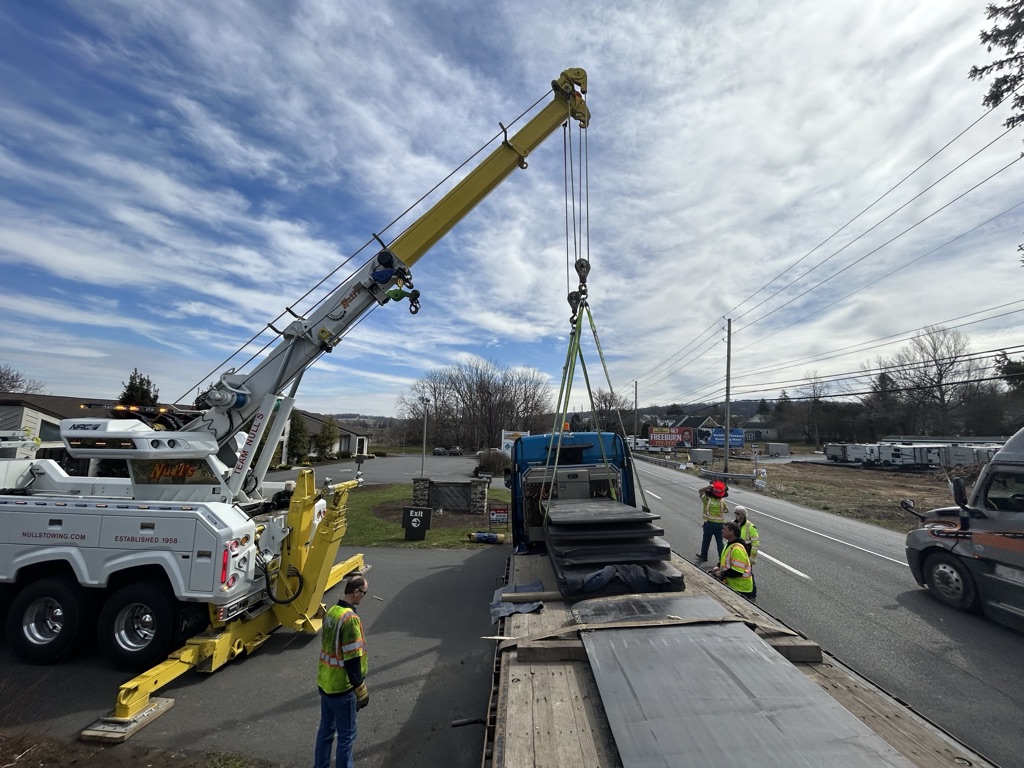Approximate time: 1459
Weather Conditions: Light snow
Contacted by Gazzerro’s Towing requesting us to respond to Airport Road between Lincoln Highway and the Route 30
bypass to assist them with an overturned tractor trailer. They advised that it was loaded and that it was reported to
have a fuel leak.
Based upon the information we were given, we immediately dispatched a recovery supervisor, trucks R5, R6, 90, and
contacted Null’s Recovery & Site Restoration to respond to the scene.
Upon arrival of Gazzerro’s crew, they sent photos to our office. Based upon the additional information gathered and the
photos from the scene, our air cushion recovery unit was dispatched to the scene as well.
Upon arrival, our recovery supervisor performed a scene survey.
A Freightliner tractor pulling a van trailer that was reported to be loaded with beer was found to have been travelling
north on Airport Road from Lincoln Highway, when for unknown reasons, the unit left the right side of the roadway.
There was a drop off approximately 3′ down, at the edge of the roadway where the unit left the roadway. The unit
struck several bollards which were marking the underground pipeline that crossed under the roadway at that point. The
truck had a fuel leak, which Null’s Recovery & Site Restoration quickly addressed. The truck had damage to the front
end and the windshield, however, the damage appeared to be minimal. It was noted that the air bags for the cab were
knocked off of their bases. The trailer’s roof was bulged out along with the side wall. There did not appear to be any
significant damage to the unit.
We were advised that the trailer was loaded with beer from a local brewery. The driver thought that the trailer was
approximately 3/4 full and that the skids of beer were approximately six foot high. The field that the unit came to rest in
was extremely soft and muddy. After falling onto it’s side, the unit slid sideways approximately one foot causing the
roofline to plow into the soft ground. All of these factors would complicate the recovery process.
It was determined that due to the minimal amount of damage to the truck and trailer, along with the sensitivity of the
cargo that we would attempt to upright the unit loaded. This would be a time consuming and tedious task to ensure that
the unit was not damaged any further and to ensure everyone’s safety working in the treacherous environment.
Once fire police arrived on location and closed the roadway, our equipment was moved into position. The two rotators
were positioned on the roadway and set-up on work platforms. Their booms were extended and rotated counter
clockwise. Rigging was connected to the steering axle and front drive axle of the tractor, the axles were chained to the
truck’s frame. Rigging was connected to the rear axle on the trailer tandems and the axle chained in place. The two
rotators “spiked’ the truck and trailer in place to prevent it from sliding as crews worked to place the air cushions under
the trailer. While this was being done, crew members readied the air cushions by carrying them down the embankment
and into the field. The air cushion compressor and valve system was also carried into the field.
Our personnel donned their wireless communication headsets.
The driveline was removed from the tractor. One of our personnel entered the cab to set the parking brakes on both the
truck and trailer. Additionally, at the driver’s request, he removed belongings of the driver. The batteries were
disconnected on the truck.
Two high pressure Matjacks were used to pre-lift the front corner of the trailer to allow two starter cushions to be put in
place at the front of the trailer.
A strap was rigged around the rear door frame and roof on the trailer. This strap was connected to one of the main
boom winch lines on the rotator at the rear of the unit.
A chain was rigged to the trailer’s fifth wheel plate and was then connected to one of the main boom winch lines on the
rotator at the front of the unit.
Truck C27 was dispatched to the scene to assist with recovering the unit back onto the roadway once it was uprighted.
Crews worked together to slowly lift the trailer. As the air cushions lifted the trailer, additional cushions were put in place
to help spread the pressure out on the sidewalls of the trailer and to support the load that was pushing out on the
sidewalls. As the trailer was lifted, additional straps were put in place and connected to the rotators.
The air cushion operator worked hand in hand with the two rotator operators along with our crew watching the trailer’s
integrity to slowly bring the unit back onto it’s wheels. Once the cushions reached their max lift, the two rotator operators
brought the unit the remainder of the way to it’s wheels.
Once on it’s wheels, the rotators had to keep ahold of the unit and hold it upright as the load was shifted to the
passenger side and the steep incline was causing the unit to severely lean. C27 was onscene at this point and
positioned at the front of the tractor trailer unit.
Crew members starting deflating the air cushions and carrying them back up out of the field to the roadway and loaded
them on C27 for transport from the scene to be cleaned.
Air was supplied to the unit to release the brakes. The heavy duty worked with the two rotators to winch the unit back up
the embankment and onto the roadway. Once the unit was winched forward approximately 10 feet, the rotator at the rear
of the trailer re-rigged and lift the entire back end of the trailer off the ground. The trailer was brought back up the
embankment and onto the roadway. The unit was then winched the remainder of the way back onto the roadway.
The rigging was then removed and both rotators returned to travel position.
We then hooked to the front of the truck and prepared to move the unit to the center of the roadway so that the truck
and trailer could be separated.
The unit was moved and once centered on the roadway, the truck and trailer were separated. Extreme caution was
used as the trailer was still severally leaning. Once the truck and trailer were separated, our truck tractor hooked to the
trailer. Our crew finished loading the air cushion system while NR&SR worked to clean the roadway of the mud and
debris.
The truck and trailer were then transported from the accident scene to Null’s of Cochranville.
Once at our facility, the truck and trailer were placed in our secure storage yard. The air cushion recovery system was
unloaded inside our shop. The air cushions were all inflated so that they could be washed. Several of our crew members
worked to wash the mud off of all of the equipment that was used. The straps and rigging were pressure washed. The
air cushions were washed by hand. All of the rigging and cushions used were left in the shop overnight to allow them to
dry.
The following day, the air cushions were all deflated and returned to the air cushion recovery unit. All of the straps and
rigging were wrapped up and returned to their respective location.
THANK YOU TO THE TEAM AT GAZZERRO’S TOWING FOR THE CALL AND THE HELP,
IT WAS PLEASURE WORKING WITH THEM.
ALSO A HUGE THANK YOU TO THE VALLEY TOWNSHIP POLICE DEPARTMENT, THE
WESTWOOD, WAGONTOWN, AND SADSBURYVILLE FIRE COMPANIES FOR THEIR
HELP WITH TRAFFIC CONTROL! AS ALWAYS, IT MAKES OUR JOB MUCH SAFER AND
WE GREATLY APPRECIATE IT!
